Unique Logistics Solutions to Complex Container Drayage Issues
Today, more than 80% of global shipping involves containers. They're packed with everything from personal storage items in dry containers to heavy machinery on flat rack containers. For business owners shipping products, getting a container from point A to point B requires precise planning and high-level tracking. But that's easier said than done when global supply chains become over-congested, leading to loading time issues and delays.
That's bad news for business owners who are already under a massive amount of stress. The truth is that container storage delays can cripple a business, but there's a viable solution: drayage brokers in San Jose, CA like RelyEx. Drayage companies provide unique solutions to minimize demurrage and help ensure the successful delivery of your freight.
With more than 30 combined years of experience and a solutions-oriented team, RelyEx has quickly become the first choice for streamlined, efficient drayage services. To understand the true value of RelyEx's offerings in the global logistics industry, it helps to understand first what drayage is and why it's used.
What is Drayage and Why Is It Important?
If you're a seasoned business owner who uses port drayage to transport your products, you know exactly how important the service can be. But if you were to poll a group of random people, you may get five different definitions of the term "drayage." That begs the question, how is one of the most crucial steps in the supply chain and most vital components of global trade such a confusing concept? When you break it down, it's not too difficult to grasp.
Drayage, by definition, means the transportation of freight from an ocean port to another destination. Today, drayage is also used to describe the process of transporting products and goods over short distances or over "the first mile."
While drayage often means short-distance movements during the supply chain process, it's primarily used in the container shipping space. Drayage loads usually have arrival and departure points in the same city and don't include long-haul, national transportation.
Let us know how we can help.
drayage broker Services
Service Areas
Because a drayage load can mean a few different things, confusion among carriers is common. Many carriers link drayage with going into a port, but that isn't always true. While all drayage loads typically originate from a port of entry, there are often several legs of a drayage journey before a container turns up at its final stop. Legs of a drayage load may include:
Why Are Drayage Companies in San Jose, CA So Important?
You may be thinking, what's so important about drayage? It's such a small step in the container storage transport process. In reality, it's an integral piece needed in the logistics industry and a crucial part of U.S. supply chain management.
To truly understand the importance of drayage, let's use flowers as an example. Most cut flower shipments enter the market from areas in South America until they end up at Dutch auction houses. Once there, wholesalers purchase flowers in bulk and send those products to retail outlets worldwide. Because flowers are perishable, they typically need to be refrigerated and are often shipped in reefer containers. These refrigerated vessels must maintain a certain temp to prevent loss.
Drayage companies like RelyEx allow flower shippers to send their products from Argentinian ports to airports in the Netherlands with peace of mind because their products are protected. The only way to accomplish this feat is with the help of swift, meticulous port drayage services. Drayage companies allow flower shippers to send their products from Argentinian ports to airports in the Netherlands with peace of mind, because their products are protected. The only way to accomplish this feat is with the help of swift, meticulous port drayage services.
If port drayage is compromised, it can cause delays and even fines. You know the packages you get delivered to your front door from apps like Amazon? Without drayage and drayage brokers, one or two-day shipping times wouldn't even be possible.
As a multi-billion-dollar industry in the U.S. alone, it seems like drayage shipping issues shouldn't exist. But the fact is inefficiencies and congestion are still major problems at ports. Whether it's a lack of carriers, absent chassis, or overburdened terminals, delays lead to missed deadlines, lost revenue, and worse.
But anytime challenges exist, so too do innovative solutions.
QUOTE REQUEST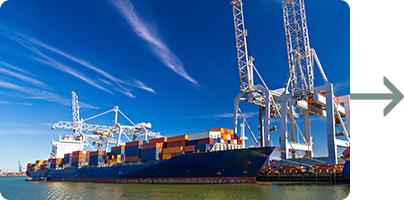
Port
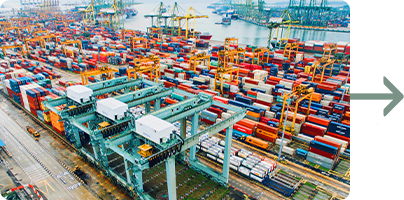
Yard
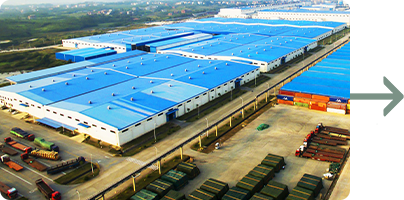
Warehouse
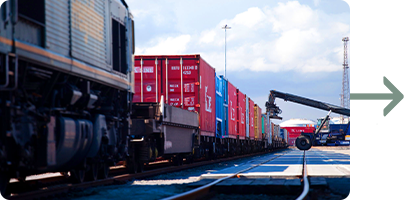
Rail

The RelyEx Difference
RelyEx was created because our founders saw a need in the logistics space for more reliability and efficiency. The reality of the shipping and logistics industry is that it has become very transactional. It's an odd evolution, because most businesses seek a third-party logistics partner that is accessible, transparent, and committed to providing solutions.
As the logistics space continues to grow, it creates newfound expenses and complexities. Clients like ours know that and need a supply chain partner who is genuinely interested in their business. By understanding the needs of our customers and carriers, we can provide the most reliable, effective drayage services possible.
Unlike some drayage companies in San Jose, CA, we begin managing your containers before they ever hit the ports by mapping out the most efficient pathways of delivery. That way, our team can discover the best drayage pathways to expedite delivery time and reduce fees that cut into profits.
Our valued drayage customers choose RelyEx because:

RelyEx Solves Problems
At RelyEx, we like to consider ourselves problem solvers. The nature of the container drayage industry presents new challenges every day, but we're firm believers that there's a solution to every hurdle we encounter. And while some drayage businesses implement a reactive approach, RelyEx customers choose us for our proactive mindset. We take pride in solving your company's drayage challenges to help you avoid frustrating fees, missed expectations, and delayed shipments. We strive to make every transaction successful and streamlined by partnering with shippers who prioritize transparent, prompt, and accurate communication.

RelyEx Has a Unique Vantage Point
RelyEx approaches your business from the customer's perspective - a unique approach that helps us provide high-quality, effective drayage services. We've been in the customers' shoes, know their pain points, and because of that, provide first-hand solutions to stressful supply chain issues. With over 30 years of collective knowledge, our team excels in:
- Inventory Management
- Logistics
- Purchasing
- Finance
Our varied, high-level drayage shipping experience helps us achieve our overarching goal: expertly managing your freight movement needs. That way, you can direct your time and focus on growing the core aspects of your business while we handle the heavy lifting. Throw in proactive planning to avoid bottleneck situations and strong communication for transparent customer relations, and you can see why so many companies trust RelyEx.

RelyEx Nurtures Strong Carrier Relationships
When it comes to shipping logistics, it only takes one mistake by a mediocre worker to disrupt your business. That's why, at RelyEx, we pride ourselves on forming and nurturing relationships with carriers who match our standards of care. Our founding partner started his career transporting freight for companies as an on-demand carrier. He uses that knowledge to maximize the resources of our carriers so that our customer's expectations aren't just met - they're exceeded.
Why Choose RelyEx as Your
Drayage Company in San Jose, CA?
Based in the port city of San Jose, RelyEx has a keen understanding of the challenges of managing the inbound and outbound flow of containers. Our team of container drayage experts provides your business with unique solutions to nuanced shipping problems, minimizing demurrage and ensuring the successful delivery of your freight.

Customers choose RelyEx because:
- We are a reliable drayage logistics partner that manages your freight from beginning to end
- We have a rare industry vantage point with 30+ years of client-side experience
- We foster and fortify the strongest vendor relations
- We take a proactive approach to problem-solving, not a reactive approach
Let us know how we can help.
 843-885-3082
843-885-3082

Your Drayage Shipments Managed from Start to Finish
Some drayage brokers don't care how customers feel about their service as long as they sign a contract and get paid. As a solutions-oriented team, RelyEx takes the opposite approach. We're motivated by the opportunity to overachieve for our customers and to provide them with the best logistics experience possible. With professional experience as carriers and shippers ourselves, we know the roadblocks and challenges you're facing. We excel at mapping out the best plans of action to solve those problems. But that's just the start.
Our tracking experts monitor and manage every aspect of your drayage shipment from booking to delivery, 24/7. Once booked, we look for the availability of your containers hourly once they're at port. When they arrive, our team acts quickly to access your storage containers when they're available.
Plus, RelyEx ensures your company's requirements are met by the carrier during loading and delivery and provide necessary documentation as fast as possible. With real-time tracking updates and access to our customer service professionals, your team has complete visibility throughout the shipping process.
We Source Top-Notch Operators at the Best Prices
Over the years, RelyEx has built a strong network of drayage carriers, transloading locations, and container storage spaces to provide you with the best possible options to match your drayage service needs. We know that searching for quality service presents an added layer of complexity and stress to our customers. That's why we work hard to take that off your plate by connecting you with our reliable shipping partners.
With a background moving freight as an on-demand carrier, our founding partner understands how to maximize the resources and equipment of our carriers to match your needs.
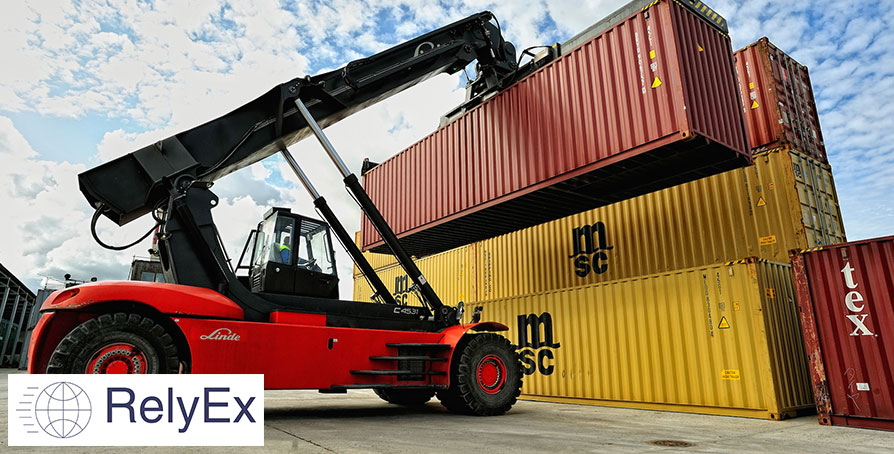

We Make Transparent, Timely Communication a Priority
Like other industries, the global logistics space is complex. Mistakes will be made, and problems will happen. With those truths in mind, RelyEx has built its reputation as problem solvers. Unlike other drayage companies, we don't shy away from this industry's complexities because we take pride in solving problems. Even better, we aim to do what's needed to avoid those problems altogether.
As your logistics partner, we will provide your company with accurate, transparent, and prompt communication. If there are unexpected issues, we'll notify you immediately and will provide several options to remedy the problem. We even offer custom reporting for large clients who need at-the-moment updates and quick access to shipment documentation.
We Have Robust Project Management Experience
Why let the unpredictability of your industry dictate your success? With a background working in manufacturing, our founders are familiar with the demands of managing production schedules and sales orders. That experience makes it abundantly clear to us that every business and industry is different. If you struggle with seasonal surges or other factors, our team supports your business with a mapped-out plan and schedule, so you stay ahead of the game.
QUOTE REQUEST
How to Avoid
Demurrage Fees for Your Business
Based in the port city of San Jose, RelyEx has a keen understanding of the challenges of managing the inbound and outbound flow of containers. Our team of container drayage experts provides your business with unique solutions to nuanced shipping problems, minimizing demurrage and ensuring the successful delivery of your freight.
What is shipping demurrage?
Demurrage is a charge issued by a port, carrier, or railroad company for storing containers that do not load and unload their cargo promptly. Once the daily limit of free time is exceeded, shippers are charged daily demurrage fees until their cargo is shipped. Though different ports have different policies, charges can range from $75 to $150 per container, per day, for a set number of days. Additional demurrage fees are incurred if a shipper exceeds the port's parameters.

What causes demurrage charges?
Even when shippers maintain a tight schedule for unloading freight, external factors can play an uncontrollable part. Typically, shipping mistakes caused by human error trigger the most demurrage charges. Some of the most common causes of demurrage include:
- Paperwork Errors
- Payment Delays
- Documents Received Too Late

Paperwork Errors
Typically, shippers need four specific documents to clear shipments through customs: A Bill of Lading (or BOL), a commercial invoice, a packing list, and an arrival notice. Seasoned drayage brokers like RelyEx are used to preparing these documents, but new shippers tend to miss this step due to inexperience.
Payment Delays
If a shipper only pays for part of their shipment, a vessel operator may refuse to release their freight until their bill is fully paid. Payment delays lead to cargo detention at the port of entry, which triggers demurrage charges.
QUOTE REQUESTDocuments Received Too Late
Paperwork is needed when you're shipping goods with a drayage company. When documents like the Certificate of Origin or Bill of Lading arrive at their destination late, you can expect demurrage fees. RelyEx avoids this situation entirely by being proactive when submitting paperwork.
Additional causes for demurrage fees can include:
- Damaged Container Storage
- Custom Released Containers
- Storage Containers Are Too Heavy
Free Consultation
RelyEx:
The Supply Chain Partner You Can Count On
At RelyEx, we know first-hand how stressful supply chain problems can be for business owners. Though drayage shipping might seem minor on the surface, it affects every stage of your shipping process. And when inevitable hurdles manifest, RelyEx propels you over the proverbial roadblocks with a proactive mindset and a passion for challenging projects. We believe that all problems have a solution, and our unique vantage point allows us to provide first-hand solutions to customers in a wide array of industries.
When it comes to your business, don't settle for anything less than RelyEx. Contact our office today to learn more about how we make your shipping experience streamlined and stress-free.
 843-885-3082
843-885-3082
Latest News in San Jose, CA
The best and brightest of San Jose's home Christmas light displays
Lauren Martinezhttps://abc7news.com/san-jose-christmas-light-displays-holiday-spirit-neighbors/14214094/
SAN JOSE, Calif. (KGO) -- San Jose residents are serious when it comes to making spirits bright.It takes Luis Trejo a week to set up his Christmas lights and displays at his home off Santa Teresa Boulevard.The reactions he gets from neighbors, kids, and his own family makes the effort enjoyable."It makes me feel very good, makes me do better for the following year. And start thinking what else can I make different so they can come more and more," Trejo said.When Trejo and his wife got home from shopping ...
SAN JOSE, Calif. (KGO) -- San Jose residents are serious when it comes to making spirits bright.
It takes Luis Trejo a week to set up his Christmas lights and displays at his home off Santa Teresa Boulevard.
The reactions he gets from neighbors, kids, and his own family makes the effort enjoyable.
"It makes me feel very good, makes me do better for the following year. And start thinking what else can I make different so they can come more and more," Trejo said.
When Trejo and his wife got home from shopping on Wednesday night, there was a line of people waiting.
"Gives me the chills like oh my God they're here for me so I get up and run turn everything on so they could enjoy it," Trejo said.
This year Luis Trejo received a 'Neighborhood Holiday Spirit Award' from Nob Hill.
VIDEO: The Tran family of San Jose competes in ABC's The Great Christmas Light Fight
Rosa Trejo is happy that after 20 years of her husband decorating, more people can see the spirit he brings to the community.
"It makes me happy that all his hard work is seen and appreciated. It feels really nice to see happiness in other people," Rosa Trejo said.
Kids in the neighborhood appreciated and recognized the effort it takes.
Robert Asatryan and his younger brother Albert live in the neighborhood.
"I personally think that I would not put in this much work just to take it out three weeks later," Robert Asatryan said.
Albert said, "It's fun to have a neighbor like this."
VIDEO: Sonoma Co. fire crew lights up woman's home for holidays after her son falls off ladder
Earlier this week the Tran family in San Jose starred in ABC's The Great Christmas Light Fight.
They were one of four finalist families from across the nation competing for $50,000.
Tony Tran said he posted picture of his yard to a Christmas decorations page on Facebook and caught the attention from a casting director.
His wife Stacey Doan said they were nervous before filming.
"The team, the crew is so nice and they talked to us before that and they make us feel comfortable, so it was a good experience," Doan said.
Doan said they decorated a lot before COVID but on a much smaller scale. During the pandemic they started to go all out.
Tony Tran and his family didn't win on the Light Fight but just being considered a finalist was an honor.
"Something magic about Christmas and the air and the lights that really bring peace to me. I hear kids running around with laughter and you know the -ohh and ahh that really, really makes everything we do is worthwhile," Tony Tran said.
The Tran family starts setting up the weekend before Halloween.
Deal with city reignites housing plan at Berryessa flea market site in San Jose
Kate Talericohttps://www.mercurynews.com/2024/02/21/deal-with-city-reignites-housing-plan-at-berryessa-flea-market-site-in-san-jose/
San Jose may have just rescued one of its most ambitious urban development projects — a plan to build thousands of homes at the site of the northside flea market.Developers had threatened in October to use a legal provision, dubbed the “builder’s remedy,” to significantly scale back plans for a 61-acre ...
San Jose may have just rescued one of its most ambitious urban development projects — a plan to build thousands of homes at the site of the northside flea market.
Developers had threatened in October to use a legal provision, dubbed the “builder’s remedy,” to significantly scale back plans for a 61-acre “urban village” project at the popular Berryessa Flea Market, contending high interest rates and increasing construction costs made the original project financially infeasible. They sought to scale back the plan for 2 million square feet of office space and 3,450 housing units — which the city approved in 2021 — to just 940 townhouses.
On Wednesday, Councilmember David Cohen announced a deal with Erik Schoennauer, a land-use consultant representing the site’s property owners, to keep the original plan almost entirely intact. In return for withdrawing its builder’s remedy application, the city will help create a special property tax district to raise $100 million to fund onsite infrastructure improvements. It may also allow the developer to replace some of the office space in the plan with alternative uses, such as an assisted-living facility or affordable housing.
“I made it clear from the beginning I was opposed to the builder’s remedy application because it was not in keeping with the long-term vision with the site,” Cohen said in an interview. “I don’t think it’s wise to make a longterm decision on the property based on short-term economic conditions.”
Schoennauer, representing a group led by business executives Brian Bump and Thomas Bumb, said: “It’s all we needed to move forward in cooperation with the city.”
The deal will also allow the property owners to avoid a potentially lengthy legal battle over its application of the builder’s remedy, a provision of state law that allows developers to build projects of any size almost anywhere in cities without a state-certified housing plan. The state only approved San Jose’s plan on Jan. 30, leaving the city out of compliance for a year.
Earlier this month, the city decided to fight back against developers, including those behind the Berryessa development, who had used the builder’s remedy to scale back previously approved projects. Over 4,000 proposed units — including 2,500 at the Berryessa BART Urban Village — would have been cut from the plan. They argued that the builder’s remedy, meant to compel cities to meet their housing production goals, can only apply when scaling up a project.
With the Berryessa development group acquiescing, that argument goes unchallenged for now.
“We’ve decided it makes more sense to work with the city to make something happen,” Schoennauer said.
That’s welcome news to one of the project’s biggest advocates — Mayor Matt Mahan.
“I was glad to see the property owner drop their Builder’s Remedy application, which would have significantly downsized housing and job capacity next to one of the most important public transit investments we’ve made in decades,” the mayor said in a statement. “I stand ready to work with them to secure infrastructure financing and get this project underway.”
Housing advocates like Mathew Reed, policy director for SV@Home, also celebrated the deal that the city reacher with the developer.
“There are still a lot of questions about how this comes together, but we are pleased there is greater commitment to getting back to a real high-density development that that BART station needs for the future of the city and the region,” he said, stressing the need to retain affordable housing planned for the site.
The Berryessa Flea Market which currently occupies the site is a local institution in East San Jose. It was first opened in 1960 by George Bumb Sr., and continues to draw hundreds of vendors — and thousands of customers — four days a week. However, speculation over the redevelopment of the site has been ongoing since the 2007, due to the BART extension project. In December, the Bumb family announced the flea market will continue to operate until at least 2026.
The new deal’s proposed special tax district, a Community Facility District, can issue bonds to pay for on-site infrastructure improvements upfront, which are then repaid over time with a property tax applied only to parcels within the district. Schoennhauer expects to raise $100 million through the district to pay for improvements, including additional streets and sidewalks, sewer line extensions and two bridges over Coyote Creek.
Schoennhauer indicated that before submitting the builder’s remedy application, the city had dragged its feet on initiating the process to establish a community facility district, but said that Councilman Cohen’s assurances made him optimistic that the district would be created in the next 18 months. The city council must approve the district’s formation.
Report: Maple Leafs have trade interest in Sharks' Ferraro, Kunin
Angelina Martinhttps://sports.yahoo.com/report-maple-leafs-trade-interest-230609297.html
While it already has been reported that the Sharks ...
While it already has been reported that the Sharks are open for business ahead of the March 8 NHL trade deadline, it looks like San Jose could get a nice return for a couple of their players on the block.
The Toronto Maple Leafs have interest in defenseman Mario Ferraro and center Luke Kunin, and "are more likely to move a first-round pick" for a player under contract, The Fourth Period's David Pagnotta reported Tuesday. Ferraro signed a four-year, $13 million Sharks contract in 2022, while Kunin remains under team control after this season as a restricted free agent.
"Including a first-rounder in a package could be of interest to both clubs," Pagnotta said of the Sharks and Maple Leafs. "I’d also throw the Edmonton Oilers in the mix for both players, as well. In either Toronto or Edmonton’s case, a contract or two would have to go back San Jose’s way to make the finances work."
In 50 games during the 2023-24 NHL season, Ferraro has tallied 14 points on one goal and 13 assists with a plus/minus rating of minus-22. San Jose's top defenseman leads the team in hits (632) since his NHL debut in 2019 -- but the current state of the Sharks means even stars like Ferraro are on the trade table.
Ferraro said in December that he doesn't want San Jose to trade him, citing "unfinished business."
"This organization has done so much for me, right?" Ferraro told San Jose Hockey Now. "I feel like I still owe them and the fans."
The Nashville Predators traded Kunin to the Sharks in July 2022, in exchange for John Leonard and a 2023 third-round pick. He was the first player trade of Mike Grier's Sharks tenure, and it appears as if the general manager could make quite the return on investment for the center, who is tied for the third-most goals on the team with eight.
But there's no telling if San Jose will be able to hash out a deal for either player, let alone the other four players on expiring contracts Pagnotta expects to be dealt at the deadline -- Anthony Duclair, Mike Hoffman, Alexander Barabanov and Kevin Labanc.
The Sharks' price tags on those players are "steep," per Pagnotta, as none are rentals are thus hold a substantially higher value.
With the deadline just over two weeks away, San Jose fans can expect the smoke around these Sharks players to pick up even more soon.
‘I really need to be paid’: Tesla canceled large pie order at last minute, CA small business owner says
Amanda Harihttps://www.kget.com/news/state-news/i-really-need-to-be-paid-tesla-canceled-large-pie-order-at-last-minute-small-business-owner-says/
SAN JOSE, Calif. (KRON) – A small business owner in Northern California says her pie shop is out thousands of dollars after Tesla unexpectedly canceled an order for thousands of mini pies.Voahangy Rasetarinera owns Giving Pies in San Jose’s Willow Glen neighborhood. Each pie is carefully assembled by hand in small batches. Despite that, the bakery has managed to put together orders for large corporations, like Apple, Google and Intuit.On Valenti...
SAN JOSE, Calif. (KRON) – A small business owner in Northern California says her pie shop is out thousands of dollars after Tesla unexpectedly canceled an order for thousands of mini pies.
Voahangy Rasetarinera owns Giving Pies in San Jose’s Willow Glen neighborhood. Each pie is carefully assembled by hand in small batches. Despite that, the bakery has managed to put together orders for large corporations, like Apple, Google and Intuit.
On Valentine’s Day, the bakery got a last-minute order request from Tesla – 2,000 pies, half to be delivered on Tuesday, the other half on Thursday. Rasetarinera said she agreed. But then the waiting game began for Tesla to pay.
After not hearing from her contact, Rasetarinera says she reached out again and sent the invoice multiple times to multiple people. Finally, at 9 p.m. Thursday night, she got a call from Tesla. The company apologized for the delayed payment and asked to double the order to 4,000 pies.
“So I contacted my staff and they’re like ‘Yes, we can work on Saturday, on Sunday, on Monday. We can get it done. No problem,’” Rasetarinera recalls.
She says she sent Tesla a revised invoice and still did not receive a payment. She contacted them multiple times and finally got a response by text.
“Sorry to bother you again, but I’m a small business. I don’t have the luxury of infinite resources so I really need to be paid so I can secure my staff. I received a message back that was like ‘Hey, so sorry, I don’t think we’re going to need this order anymore,’” Rasetarinera said.
Subscribe Now
17 News Alerts
Rasetarinera had turned down other orders and already purchased resources like ingredients, boxes and stickers. After she posted about it on social media, she says Tesla saw it and reached out.
“They said they wanted to make it right by me and they offered for me to do two events on March 6 and 7, but I’m still waiting for confirmation,” she said. “If they want to make it right, I’m going to give them the opportunity to make it right.”
KRON4 reached out to Tesla for comment, but as of Thursday night, they have not responded.
Predators vs. Sharks February 24 Tickets & Start Time
Data Skrivehttps://www.wsmv.com/sports/betting/2024/02/24/predators-vs-sharks-buy-nhl-tickets/
The Nashville Predators' Ryan O'Reilly and the San Jose Sharks' William Eklund are two of the top players to keep an eye on when these teams face off on Saturday at 10:00 PM ET, at SAP Center at San Jose.If you're looking to attend this matchup in person, head to Ticketmaster to purchase your tickets!Predators vs. Sharks Game Information...
The Nashville Predators' Ryan O'Reilly and the San Jose Sharks' William Eklund are two of the top players to keep an eye on when these teams face off on Saturday at 10:00 PM ET, at SAP Center at San Jose.
If you're looking to attend this matchup in person, head to Ticketmaster to purchase your tickets!
Predators vs. Sharks Game Information
Catch NHL action all season long on Fubo!
Predators Players to Watch
Catch NHL action all season long on ESPN+!
Sharks Players to Watch
Sportsbook Promo Codes
Predators vs. Sharks Stat Comparison
Not all offers available in all states, please visit BetMGM for the latest promotions for your area. Must be 21+ to gamble, please wager responsibly. If you or someone you know has a gambling problem, contact 1-800-GAMBLER.
Disclaimer:


